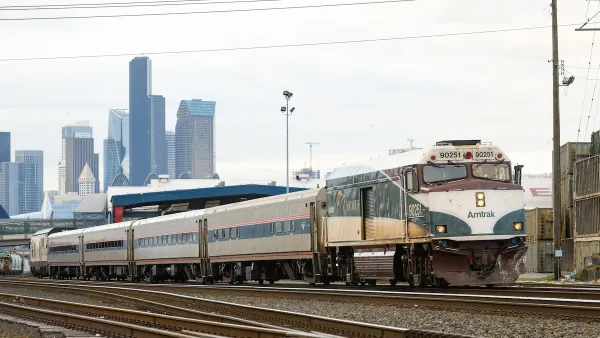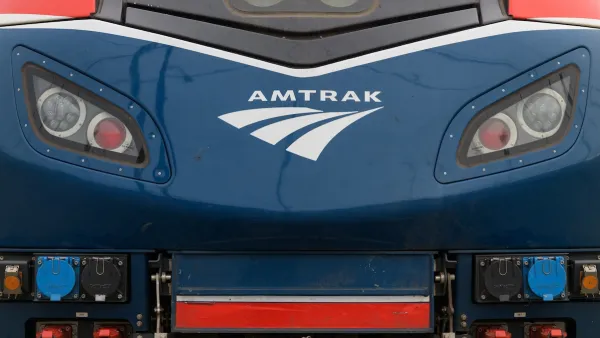The much-maligned rail system is being reconsidered, as gas prices and environmental awareness send people looking for solutions. But can Amtrak step up to the plate?
"The storybook plight of the Little Engine That Could, struggling to make it up a mountain, is a pretty apt metaphor for America's rail system. Limited access, outdated equipment and high ticket prices have been the sorry story of Amtrak, the nation's principal rail carrier, from its beginning pushing most would-be riders to other ways of getting around. But $4-a-gallon gas and chaotic airways are working in Amtrak's favor. In an era when green is hip and mileage matters, trains can't be beat. A diesel locomotive at its most efficient can move a ton of weight 436 miles on a single gallon of fuel, according to the Association of American Railroads, making a full train about 10 times thriftier than your new hybrid. "Hands down, traveling by rail is the most fuel-efficient and least-carbon-intensive way you can go," says Nancy Kete, director of the World Resource Institute Center for Sustainable Transport.
It's a common theme in ecoconsciousness: what used to be the antiquated way of doing things-like growing your own food or harnessing power from wind-is suddenly new again. Amtrak and a handful of commuter rail lines are trying to grab the moment by using environmental friendliness to appeal to new riders and the taxpayers who fund the systems. There are signs the strategy is working. Over the past two years, Amtrak's ridership has increased almost 17 percent systemwide. And the recent spike in gas prices has pushed train ridership to capacity on some routes. A hefty funding package for improvements is currently up for debate in Washington, and Amtrak is already exploring ways to enhance service along popular routes. But getting the system up to speed is a tall order."
FULL STORY: All Eyes on Amtrak

National Parks Layoffs Will Cause Communities to Lose Billions
Thousands of essential park workers were laid off this week, just before the busy spring break season.

Retro-silient?: America’s First “Eco-burb,” The Woodlands Turns 50
A master-planned community north of Houston offers lessons on green infrastructure and resilient design, but falls short of its founder’s lofty affordability and walkability goals.

Delivering for America Plan Will Downgrade Mail Service in at Least 49.5 Percent of Zip Codes
Republican and Democrat lawmakers criticize the plan for its disproportionate negative impact on rural communities.

Test News Post 1
This is a summary

Test News Headline 46
Test for the image on the front page.

Balancing Bombs and Butterflies: How the National Guard Protects a Rare Species
The National Guard at Fort Indiantown Gap uses GIS technology and land management strategies to balance military training with conservation efforts, ensuring the survival of the rare eastern regal fritillary butterfly.
Urban Design for Planners 1: Software Tools
This six-course series explores essential urban design concepts using open source software and equips planners with the tools they need to participate fully in the urban design process.
Planning for Universal Design
Learn the tools for implementing Universal Design in planning regulations.
EMC Planning Group, Inc.
Planetizen
Planetizen
Mpact (formerly Rail~Volution)
Great Falls Development Authority, Inc.
HUDs Office of Policy Development and Research
NYU Wagner Graduate School of Public Service




























